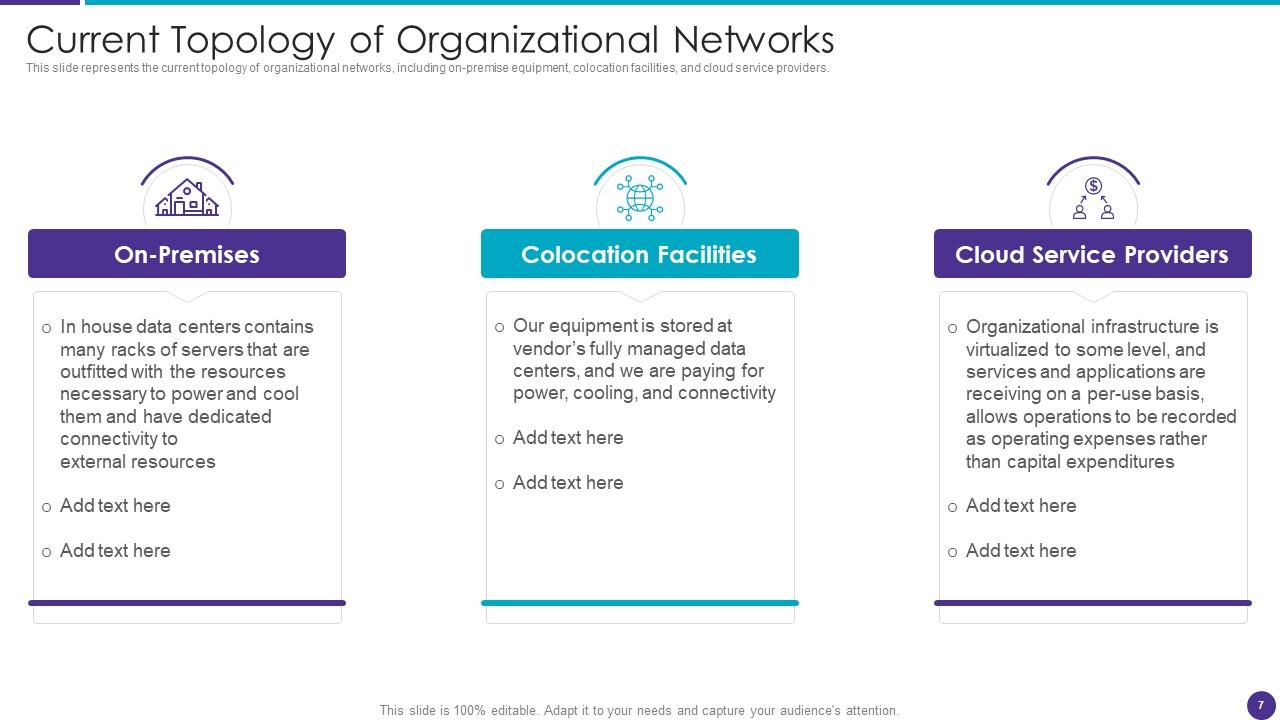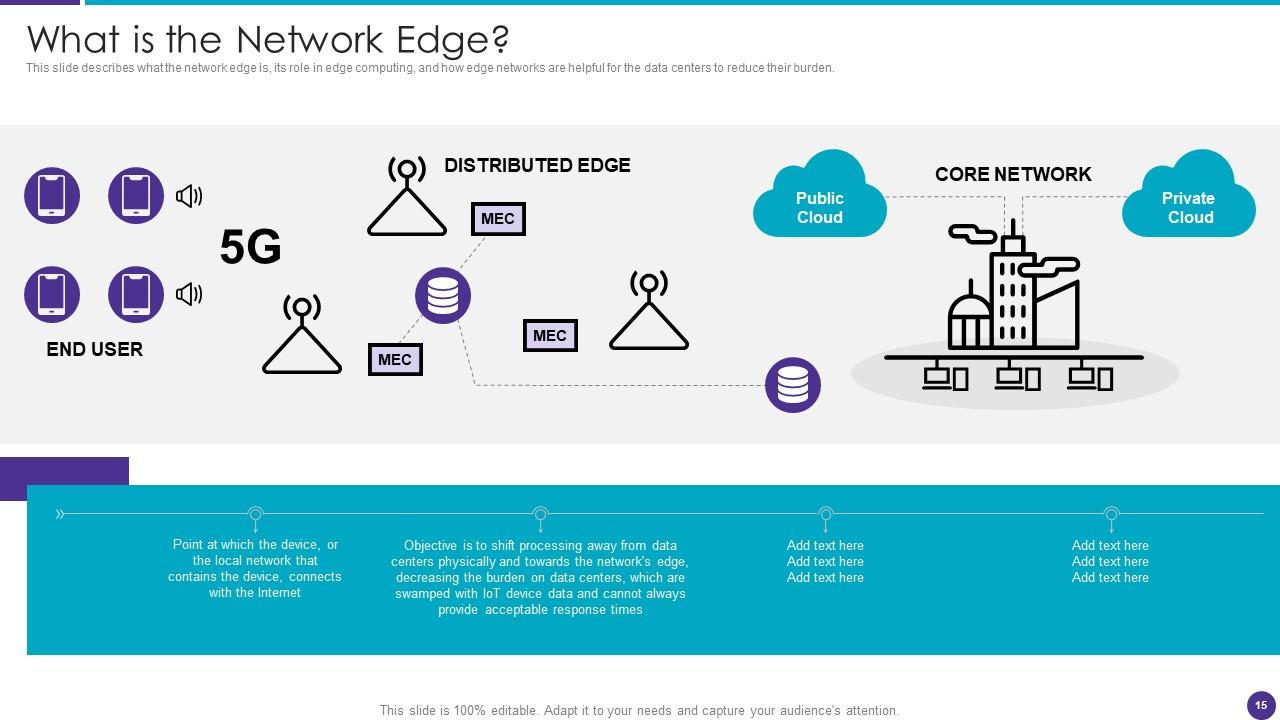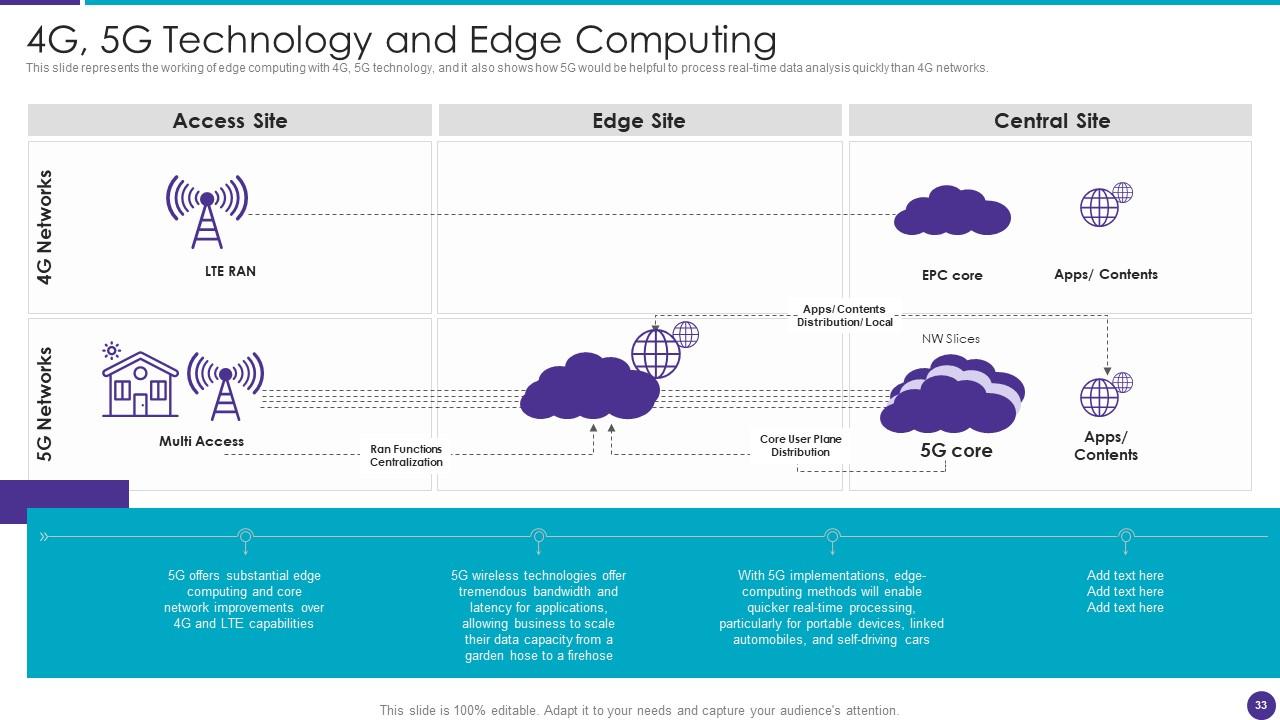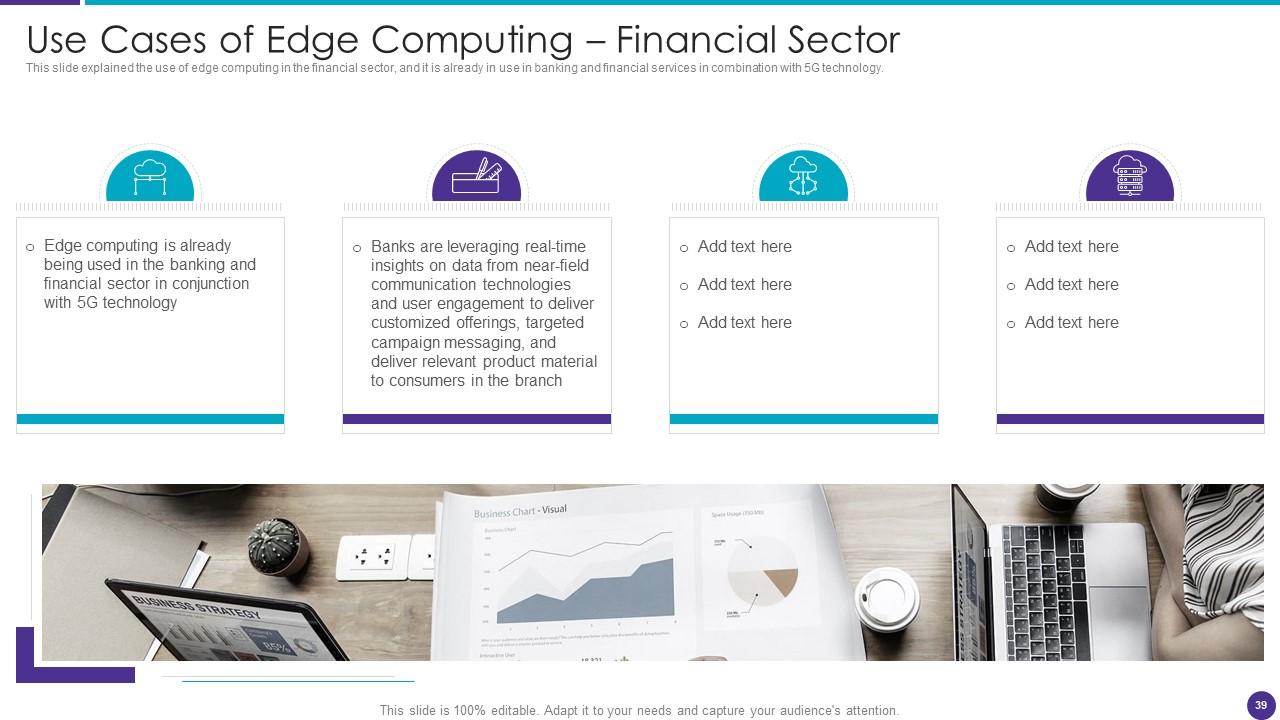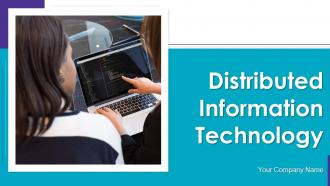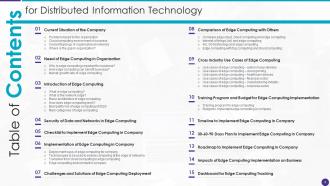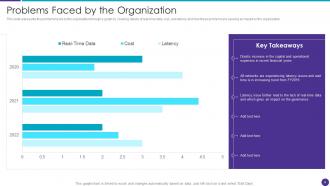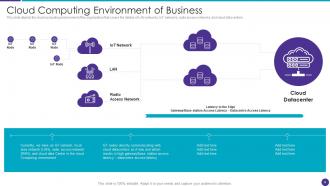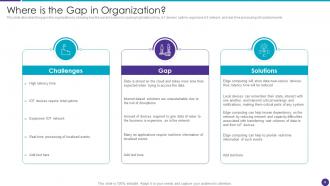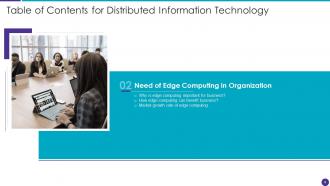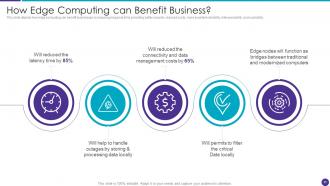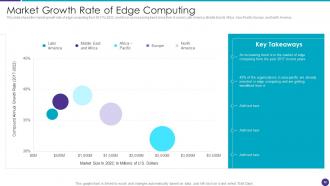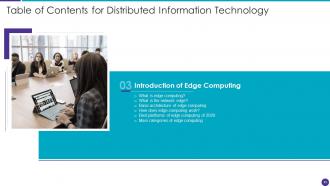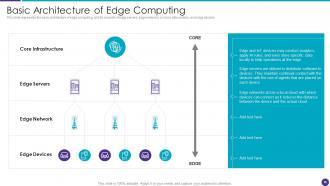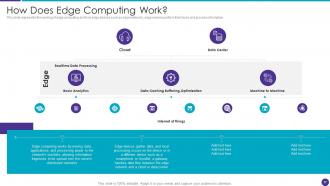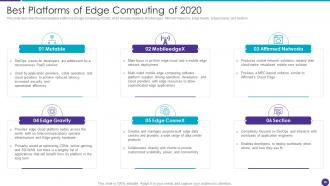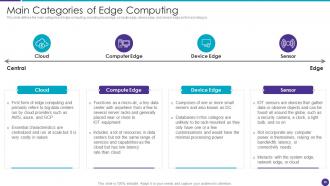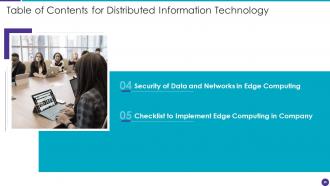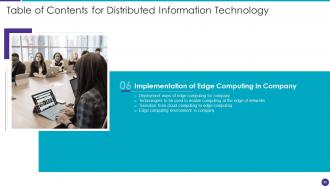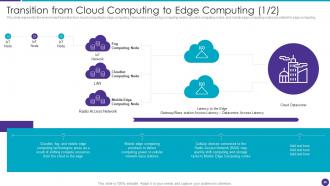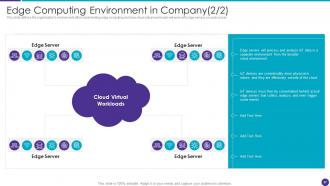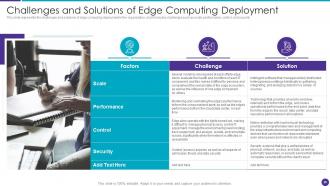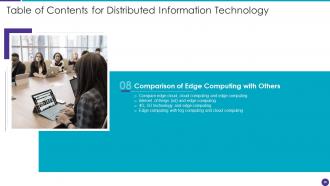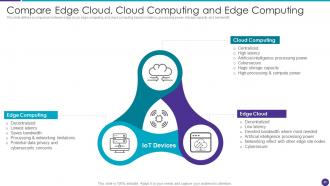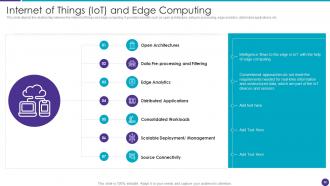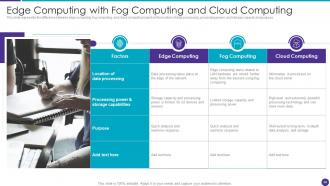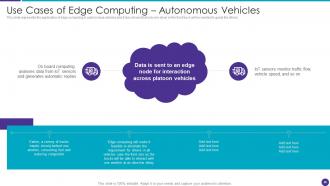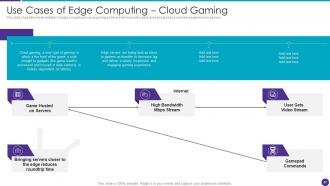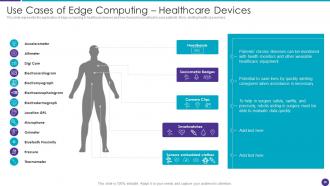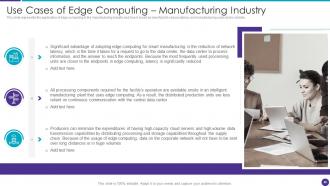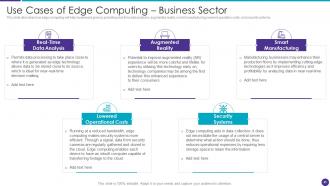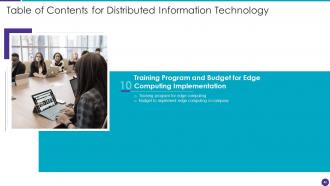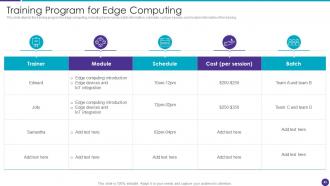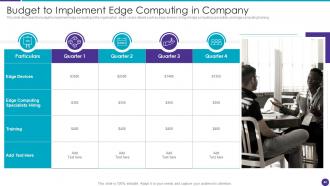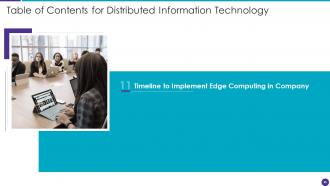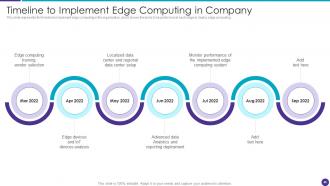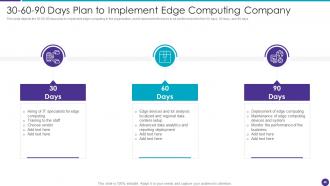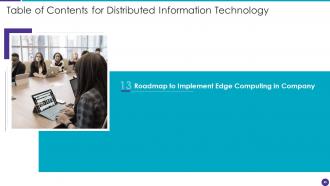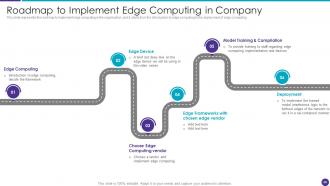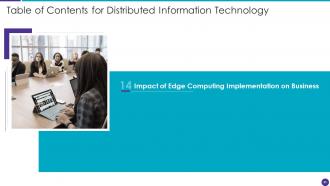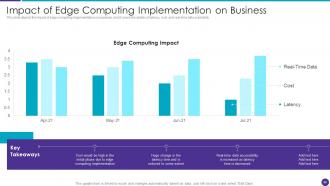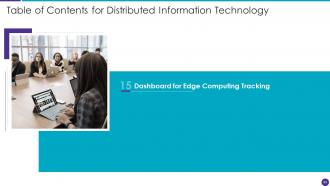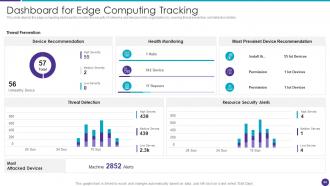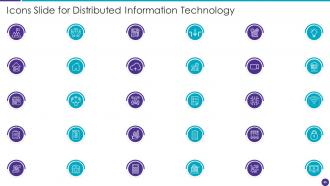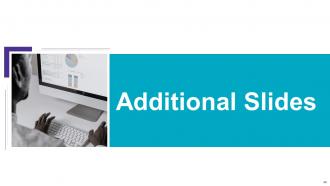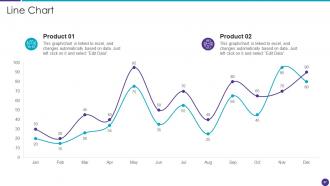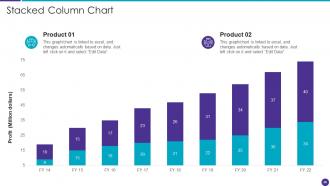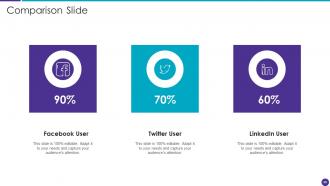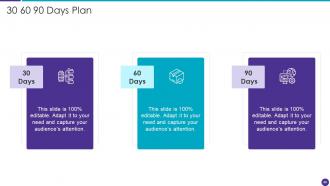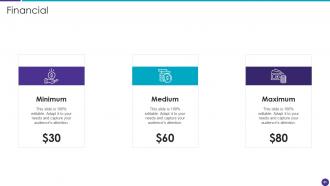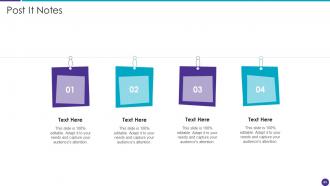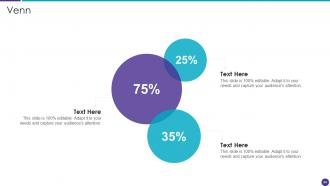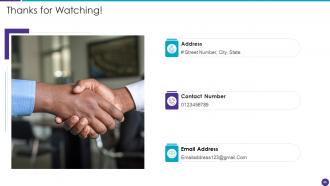Distributed Information Technology Powerpoint Presentation Slides
Distributed IT enables mobile computing and Internet of Things IoT technologies by providing dispersed processing capacity. Grab our efficiently designed template on Distributed Information Technology that gives a brief idea about problems experienced by organizations and existing cloud environments to understand the need for Distributed IT and its implementation in the organization. In this Distributed IT PowerPoint Presentation, we have covered the current topology of organizational networks, gap analysis, benefits of Distributed IT to the business, and market growth rate. In addition, this competent PPT contains an introduction to Distributed IT by covering topics network edge, basic architecture, its working, best platforms, and main categories. Furthermore, this Distributed IT template includes the security of data and networks, a checklist to implement Distributed Information Technology, implementation and challenges, and solutions to implement Distributed IT. Moreover, this PPT caters to a comparison of Distributed Information Technology with Fog Computing, Internet of Things IoT, Cloud Computing, 4G and 5G technology, and use cases of Distributed IT in different sectors such as healthcare, cloud gaming, financial industry and so on. Customize this 100 percent editable template now
You must be logged in to download this presentation.
 Impress your
Impress your audience
Editable
of Time
PowerPoint presentation slides
Deliver an informational PPT on various topics by using this Distributed Information Technology Powerpoint Presentation Slides. This deck focuses and implements best industry practices, thus providing a birds eye view of the topic. Encompassed with sixty five slides, designed using high-quality visuals and graphics, this deck is a complete package to use and download. All the slides offered in this deck are subjective to innumerable alterations, thus making you a pro at delivering and educating. You can modify the color of the graphics, background, or anything else as per your needs and requirements. It suits every business vertical because of its adaptable layout.
People who downloaded this PowerPoint presentation also viewed the following :
Content of this Powerpoint Presentation
Slide 1: This slide displays title i.e. 'Distributed Information Technology' and your Company Name.
Slide 2: This slide presents agenda of the company.
Slide 3: This slide exhibits table of contents.
Slide 4: This slide depicts title for four topics that are to be covered next in the template.
Slide 5: This slide represents the problems faced by the organization through a graph by covering details of real-time data, cost, etc.
Slide 6: This slide depicts the cloud computing environment of the organization that covers the details of LAN networks, IoT networks, radio access networks, etc.
Slide 7: This slide represents the current topology of organizational networks, including on-premise equipment, colocation facilities, and cloud service providers.
Slide 8: This slide describes the gap in the organization by showing how the current system is causing high latency time, IoT devices’ uptime, etc.
Slide 9: This slide depicts title for three topics that are to be covered next in the template.
Slide 10: This slide comprises the factors that explain how edge computing is essential for businesses, and it includes the transformation of manufacturing.
Slide 11: This slide depicts how edge computing can benefit businesses by reducing response time, providing better security, reduced costs, etc.
Slide 12: This slide shows the market growth rate of edge computing from 2017 to 2022, and it is in an increasing trend since then.
Slide 13: This slide depicts title for six topics that are to be covered next in the template.
Slide 14: This slide represents the meaning of edge computing, data stores at edge devices, and how it reduces latency by putting information closer to the source devices.
Slide 15: This slide describes what the network edge is, its role in edge computing, and how edge networks are helpful for the data centers to reduce their burden.
Slide 16: This slide represents the basic architecture of edge computing, and its consists of edge servers, edge networks or micro data centers, and edge devices.
Slide 17: This slide represents the working of edge computing and how edge devices such as edge networks, edge servers perform their tasks and process information.
Slide 18: This slide describes the best available platforms of edge computing of 2020, and it includes Mutable, MobileedgeX, Affirmed Networks, Edge Gravity, etc.
Slide 19: This slide defines the main categories of edge computing, including cloud edge, compute edge, device edge, and sensor edge as the last category.
Slide 20: This slide depicts title for two topics that are to be covered next in the template.
Slide 21: This slide represents the security of data and networks in edge computing.
Slide 22: This slide represents the checklist to implement edge computing in the organization.
Slide 23: This slide depicts title for four topics that are to be covered next in the template.
Slide 24: This slide represents the deployment ways of edge computing, and it covers the deployment on local devices, localized data centers, and regional data centers.
Slide 25: This slide shows the technologies that would help to enable computing at the edge of networks, including fog computing, cloud computing, etc.
Slide 26: This slide represents the environment transition from cloud computing to edge computing.
Slide 27: This slide defines the organization's environment after implementing edge computing and how cloud virtual workloads will work with edge servers on each corner.
Slide 28: This slide depicts title for the topics that are to be covered next in the template.
Slide 29: This slide represents the challenges and solutions of edge computing deployment in the organization, and it includes challenges such as scale, etc.
Slide 30: This slide depicts title for four topics that are to be covered next in the template.
Slide 31: This slide defines a comparison between edge cloud, edge computing, and cloud computing based on latency, processing power, storage capacity, and bandwidth.
Slide 32: This slide depicts the relationship between the internet of things and edge computing.
Slide 33: This slide represents the working of edge computing with 4G, 5G technology.
Slide 34: This slide represents the difference between edge computing, fog computing, and cloud computing based on the location of data processing, etc.
Slide 35: This slide depicts title for six topics that are to be covered next in the template.
Slide 36: This slide represents the application of edge computing in autonomous vehicles.
Slide 37: This slide shows the implementation of edge computing in cloud gaming and how it will reduce the delay time and provide a seamless experience to gamers.
Slide 38: This slide represents the application of edge computing in healthcare devices.
Slide 39: This slide explained the use of edge computing in the financial sector.
Slide 40: This slide represents the application of edge computing in the manufacturing industry.
Slide 41: This slide describes how edge computing will help businesses grow by providing real-time data analysis, augmented reality, smart manufacturing, etc.
Slide 42: This slide depicts title for two topics that are to be covered next in the template.
Slide 43: This slide depicts the training program for edge computing, including trainer name, batch information, schedule, cost per session, etc.
Slide 44: This slide describes the budget to implement edge computing in the organization.
Slide 45: This slide depicts title for the topics that are to be covered next in the template.
Slide 46: This slide represents the timeline to implement edge computing in the organization.
Slide 47: This slide depicts title for the topics that are to be covered next in the template.
Slide 48: This slide depicts the 30-60-90 days plan to implement edge computing in the organization.
Slide 49: This slide depicts title for the topics that are to be covered next in the template.
Slide 50: This slide represents the roadmap to implement edge computing in the organization.
Slide 51: This slide depicts title for the topics that are to be covered next in the template.
Slide 52: This slide depicts the impact of edge computing implementation on business, and it covers the details of latency, cost, and real-time data availability.
Slide 53: This slide depicts title for the topics that are to be covered next in the template.
Slide 54: This slide depicts the edge computing dashboard to monitor the security of networks and devices in the organization.
Slide 55: This is the icons slide.
Slide 56: This slide presents title for additional slides.
Slide 57: This slide exhibits monthly line charts for different products. The charts are linked to Excel.
Slide 58: This slide exhibits yearly profits stacked column charts for different products. The charts are linked to Excel.
Slide 59: This slide highlights comparison of products based on selects.
Slide 60: This slide depicts 30-60-90 days plan for projects.
Slide 61: This slide showcases financials of company.
Slide 62: This slide exhibits yearly timeline of company.
Slide 63: This slide depicts posts for past experiences of clients.
Slide 64: This slide displays Venn.
Slide 65: This is thank you slide & contains contact details of company like office address, phone no., etc.
Distributed Information Technology Powerpoint Presentation Slides with all 70 slides:
Use our Distributed Information Technology Powerpoint Presentation Slides to effectively help you save your valuable time. They are readymade to fit into any presentation structure.
FAQs
Edge computing is a distributed computing paradigm that brings data storage and computation closer to the location where it is needed, rather than relying on a central data center or cloud. This means that data processing and analysis happens on the "edge" of the network, closer to the source of the data, rather than being transmitted back and forth to a central data center. The key difference between edge computing and cloud computing is that edge computing brings computation closer to the data source, while cloud computing centralizes it in a data center.
Implementing edge computing in an organization can provide several benefits, such as faster processing and response times, reduced latency, improved data security, reduced bandwidth costs, and increased reliability. For businesses, this can translate into increased efficiency, faster decision-making, better customer experiences, and reduced costs.
Edge computing can be applied in different industries to enable real-time monitoring and analysis of data, which can lead to better decision-making, improved operational efficiency, and enhanced customer experiences. In manufacturing, edge computing can be used to monitor equipment performance and identify issues before they cause downtime. In healthcare, edge computing can be used to analyze patient data in real time and enable remote patient monitoring. In finance, edge computing can be used to improve fraud detection and enable faster and more accurate financial transactions.
Several platforms and technologies are available for edge computing, such as Kubernetes, Docker, AWS Greengrass, Microsoft Azure IoT Edge, and Google Cloud IoT Edge. These platforms provide a range of services and tools for deploying and managing edge computing workloads, such as container orchestration, data ingestion, processing and storage, machine learning, and analytics. Organizations can leverage these platforms to build scalable and flexible edge computing solutions that can meet their specific business needs.
Some of the challenges faced during the deployment of edge computing include the complexity of managing distributed systems, ensuring data privacy and security, addressing interoperability issues, and dealing with hardware and network limitations. These challenges can be addressed through careful planning and design, use of appropriate security and encryption protocols, the implementation of standard interfaces and communication protocols, and the selection of hardware and software that is optimized for edge computing environments.
-
I was confident and well prepared for my presentation for the first time ever. With SlideTeam’s templates, I could deliver one of my best presentations. Will be coming back for more!
-
The quality of the templates is as fine as it could get. It was a purchase well made!









